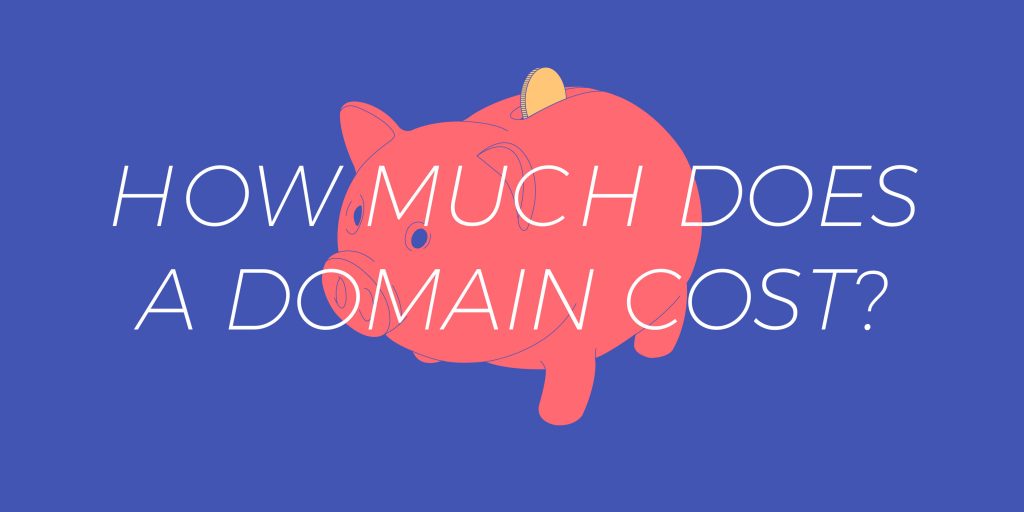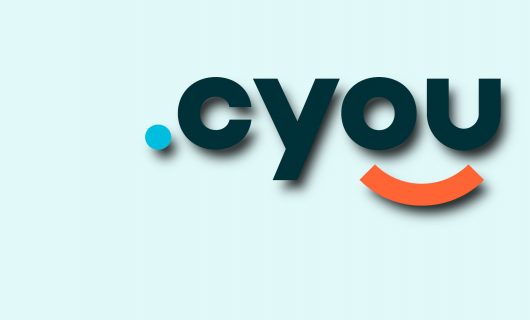When launching a new website, setting up a new email system, or just buying a domain before someone else does, people often ask, “how much does a domain really cost?” It’s important to understand both what a domain name costs, but also what factors contribute to domain value.
Nothing
Let’s start with a non-answer: nothing.
Why’s that? A domain is completely immaterial. There’s nobody you have to pay to manufacture a domain name out of some kind of raw materials. It doesn’t grow from the ground and need harvesting. When you get a domain name, the basic underlying operation isn’t even that complex and consists of a database update and for whoever is making that database update, the domain is free, right?
Well, yes and no.
The whole domain name system depends on the fact that it’s hierarchical. That means that domain name delegation needs to take place in some kind of orderly way. If two people want the same domain name, there has to be some system to determine who gets it. In the early days, years before the .com boom vastly expanded the number of domain names registered and this was only an abstract problem, it was just whoever got there first.
When the powers that be decided to start charging for domain names, there was certainly a lot of opposition, but at the same time, even then, administrators of the domain name system were starting to worry that the number of domain names, specifically .com domains, was getting unmanageably large.
Even without that, at this point there’s an enormous administrative apparatus devoted to maintaining the domain name system, both within ICANN, the regulatory body that is the over-arching manager of domain name delegation, and outside of it, distributed across various registrars and registries.
And while, there’s no raw material to buy that you have to create a domain name out of, you also can’t just create a domain name out of thin air. It requires maintaining a system that’s potentially susceptible to threats from attackers, managing instances of abuse, like domains that are used for spamming, and mediating in the case of intellectual property being abused. All of these factors contribute to domain value.
And as we’ll see, there are also numerous factors that play into the final price of a domain name. These factors add domain value, or help sustain the management of your domain name.
Registry price
The first input in the price of a domain name is the price that the registry charges. A registry is a company that is in charge of a particular top-level domain.
A top-level domain is the part “after the dot” in your domain name. The most popular top-level domain, or TLD, is .com. Other popular TLDs are .net and .org, but there are literally hundreds of them, and their prices vary.
The reason is that each TLD is managed by a different company, called a registry. These companies have all “won” the rights to manage a TLD, and they now face the challenge of finding just the right price that they’ll sell their domain at.
A registry needs to be principally concerned with their top-level domain value. As an independent company, the biggest pressure is they have to sell enough domains at the right price in order to make a profit.
But there’s more to it than that. Managing a TLD is more than just adding a line to a database, registries need to maintain a certain domain value for their TLD. This can impact the price in that domain names that are priced too low can become “disposable” and get bought up en masse by spammers looking for a domain name to use to send a bunch of spam out before the reputation of each domain gets trashed, at which point they just throw it away, which can deeply impact domain value.
One of the worst things that can happen to a registry is that the TLD they manage becomes a known haven for spammers. In this case, the domain value can drop precipitously. Some people will start blocking all domains in that TLD, and in turn, nobody will buy their domains because doing so will get their emails automatically blocked.
In fact, this is a major impediment generally to the adoption of the hundreds of new TLDs by the general public. There are those who believe that any email coming from a domain other than .com is not to be trusted.
Registries decide on pricing by meshing their business model with these kinds of considerations, and everyone is trying a different approach, hence the price can range widely:
- From 99¢ to almost $1800
Premium domains
Premium domains are the domains that the registry has determined have a domain value that’s very high and could be in high demand and so they’ve assigned a specific, considerably higher price to these domains.
Promotions
Registries also run various promotions, typically on the first year of the domain name, but sometimes on the first couple of years.
When you buy a domain name from Gandi, we in turn pay the corresponding registry to register the domain name for you, so the price we’re charged by the registry—which relies on all the factors listed above—is the first piece of the cost of your domain name.
While this varies across registries, let’s take .com as an example. For each .com domain, we pay the registry about $8.
But that’s just the cost. Now let’s look at what contributes to the domain value you get in exchange.
Batteries included
When you buy a domain name, we’re not just acting as a middlemen between you and the registry. We’re providing you with all the basic things you’ll need to get going with using your domain name, which in turn increases the overall domain value of any domain name you buy at Gandi. We sell our domains “batteries included.”
Here’s what you get with your domain name:
Two free mailboxes with 3 GB of storage and email forwarding
When you register a domain name at Gandi, one important part of the domain value you get is two free email mailboxes with 3 GB of storage. That means you can create two email addresses that you can send and receive email to and from free with the purchase of your domain name.
Not only that, but you get 1,000 free email forwarding addresses, which let you forward email sent to 1,000 addresses to any email account you want.
TLD list, a site that tracks domain prices across registries, records the a “three year value score” to measure domain value between different registrars. They estimate that a free email mailbox is worth $7.50 a year for the first mailbox, and $1.00 per year for every mailbox after that. They peg the email forwarding service at $3.00 per year.
DNS
LiveDNS, our DNS service, is top of the line. Distributed geographically using “nanopops” in Paris, Luxembourg, Tokyo, London, Amsterdam, Berlin, Prague, Ashburn, and Los Angeles, LiveDNS pushes updates immediately and cuts down propagation time. Since this enables you to quickly implement changes live on the services you use your domain name for, LiveDNS greatly increases your domain value.
TLD List estimates that DNS service costs on average $3.50 per year in their three year domain value score.
Security
In addition to getting your domain name batteries included, another important aspect of domain value is the security of your domain names. Ultimately, having a domain name requires good, strong security as well. And the more domain names you have, the more important security is.
At Gandi, you can keep your domains safe with the latest security features, including:
Customer care
Another aspect of domain value you get at Gandi is access to our Customer care team. Our domain support team consists of 25 team members distributed between our offices in Paris, France; Bissen, Luxembourg; San Francisco, California (US); and Taipei, Taiwan. Someone is always on duty, 24/7, 365 days a year, and they are reachable by email or live chat at help.gandi.net.
Our Customer care team works alongside our 17 member operations team to quickly address issues for individual customers or bigger network issues as they arise.
To provide this level of service, we don’t outsource our support to a call center that’s remote from our offices, and of course that means paying our team members well and making sure they have the opportunities they need to develop professionally. This adds even more to your domain value at Gandi that you can’t necessarily find elsewhere.
The quality of our Customer care team is exactly how we’ve been able to get to where we are today, with over 2 million domain names registered, without spending on advertising—the quality of our service speaks for itself. Our Customer care team makes happy customers and happy customers tell their friends.
That’s why, along with continually developing and improving our technical platform, our Customer care team is one of the areas we invest the most in and one of the greatest additions to your domain value we offer.
How much does a domain cost?
From the baseline price from the registry, in our example, about $8, we add about $7.50.
- Cost at registry: $8
- Gandi price: $15.50
The exact rate varies from TLD to TLD, with some being more and others less, but .com is pretty representative.
And there also economies of scale, which is why our pricing grid translates to progressively lower prices the more money you spend with us.
If you have questions about specifics, feel free to contact our Customer care team at help.gandi.net. And read about how much a website costs here.
And if you’re ready to buy a domain name, get started here:




